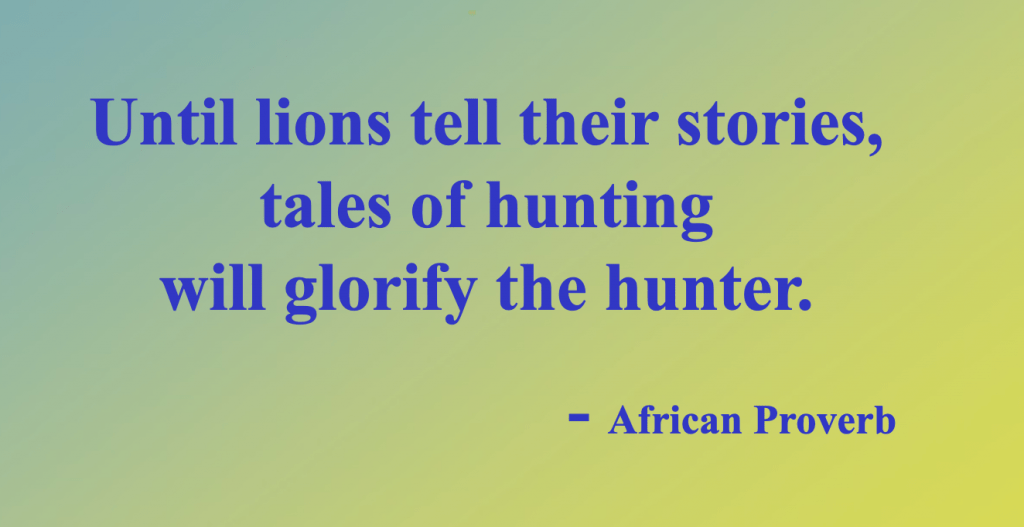Post-colonial theory provides a way to understand how the legacy of colonization has shaped historical and economic realities in our modern world. This can help illuminate contexts for current and relevant issues like racism, structural inequality and globalization.
It helps us see that history is an argument, not a consensus, not a timeline of events cemented in a textbook.
A postcolonial author gives voice to a perspective that has been historically silenced.
This is urgent as colonial representations of colonized peoples have often perpetuated a binary understanding in which colonized peoples are seen as Other, fundamentally different and necessarily inferior to the society of the colonizer.
A postcolonial author tells a story as an insider, reclaiming political agency in the face of historical oppression. The work of postcolonial authors may provide a window into a culture, a worldview, or an experience to which we would otherwise have no access. These works necessarily complicate the dominant narratives and ideologies that would marginalize many … students and their cultures — ideologies and narratives that are still very much at play in today’s world.—Eric Spreng
The theory argues that the experience of colonialism divided the world into us and them, civilized and uncivilized; post-colonial theorists seek to identify this pattern in literature and to counter this racist historical legacy.
This theory is important for us to consider because we are living in post-colonial times (or at least some of us are or are working hard to get there). The Truth and Reconciliation Commission has charged Canada and Canadians with the task of meeting 94 calls to action as a start to reconcile the relationship between them and the indigenous peoples of this land.
It’s important for you to be able to deconstruct the texts you read/view; to have available a critical lens through which to understand the text, its language, and its subtext.
We are using a post-colonial text (Moon) to learn about post-colonial theory because the text offers you a chance to see yourself and your community represented, and because Rice intentionally wants to challenge the dominant society’s conception of Native people and reserve life, generally, thereby offering an opportunity for this critical analysis.
Here’s Waub Rice speaking from an interview with Brandon Crilly
Given the roles that a lot of these characters play, were you worried about any of them being read too much like tropes? Aileen, as an example, has a powerful voice and a lot of nuance, but being the story’s elder presents a risk in how she’s going to be perceived, right?
Thanks, Brandon! I’m glad you appreciated the depth of the characters. I wasn’t really worried about them being read like tropes. In fact, I tried to buck some tired tropes. For example, the common stereotype of chief in council is one of incompetence and corruption. Although the leadership in this community faces some serious challenges, the people in those positions genuinely care about the well-being of their members and try their best to keep them safe in this crisis.
What other examples of stereotypes or misrepresentation of Native people and community does Rice expose?
Please view the presentation below and add new information about post-colonial literary theory to your note.
Finally, let’s share our thinking about the novel on this padlet.

